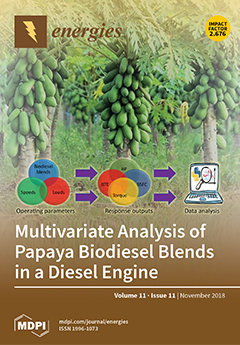The effective operation of machinery in agricultural processes is crucial in terms of energy efficiency, economic consequences, and environmental footprint. The agricultural sector provides many opportunities to bring biomass to the market. An interesting option is to collect the branches after a regular
[...] Read more.
The effective operation of machinery in agricultural processes is crucial in terms of energy efficiency, economic consequences, and environmental footprint. The agricultural sector provides many opportunities to bring biomass to the market. An interesting option is to collect the branches after a regular pruning of apple orchards in the winter-spring season. As the harvesting of pruning residues in apple orchards for energy purposes demands additional primary energy, any measures that increase the amount of collected biomass are desirable. In this study, the influence of pruning harvesting using a baler with and without windrowers on pruning biomass yield, energy input and output flow, energy balance, CO
2 emission reduction, and costs of that operation in apple orchards was investigated. The performed analysis, based on the results from two apple orchards, revealed that the energy balance was positive for both variants. However, in comparison with the harvesting process without windrowers, the use of windrowers in these two orchards caused an increase in pruning biomass yield by 0.45 tDM·ha
−1 per year (25%) and 0.54 tDM·ha
−1 per year (33%), respectively. The energy balance increased up by ca. 0.8–1.0 GJ·ha
−1, although the fuel consumption by the tractor was higher. The use of windrowers did not significantly increase the costs, but resulted in remarkably better income from biomass selling (ca. €30–40 ha
−1). Finally, the increase in the mass of harvested biomass led to a higher potential CO
2 emission reduction. As a result, pruning biomass is an attractive source of energy, especially for local markets.
Full article





